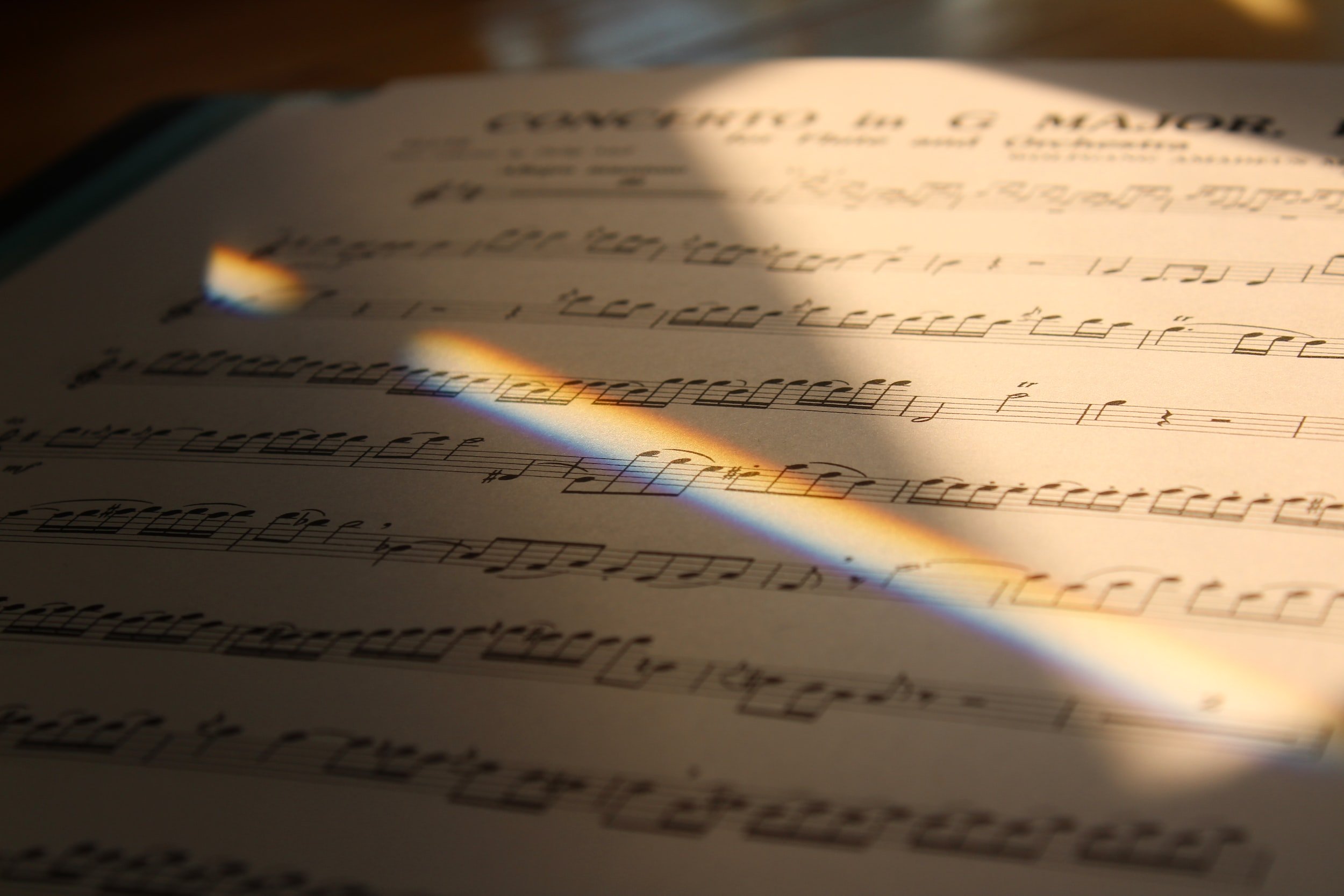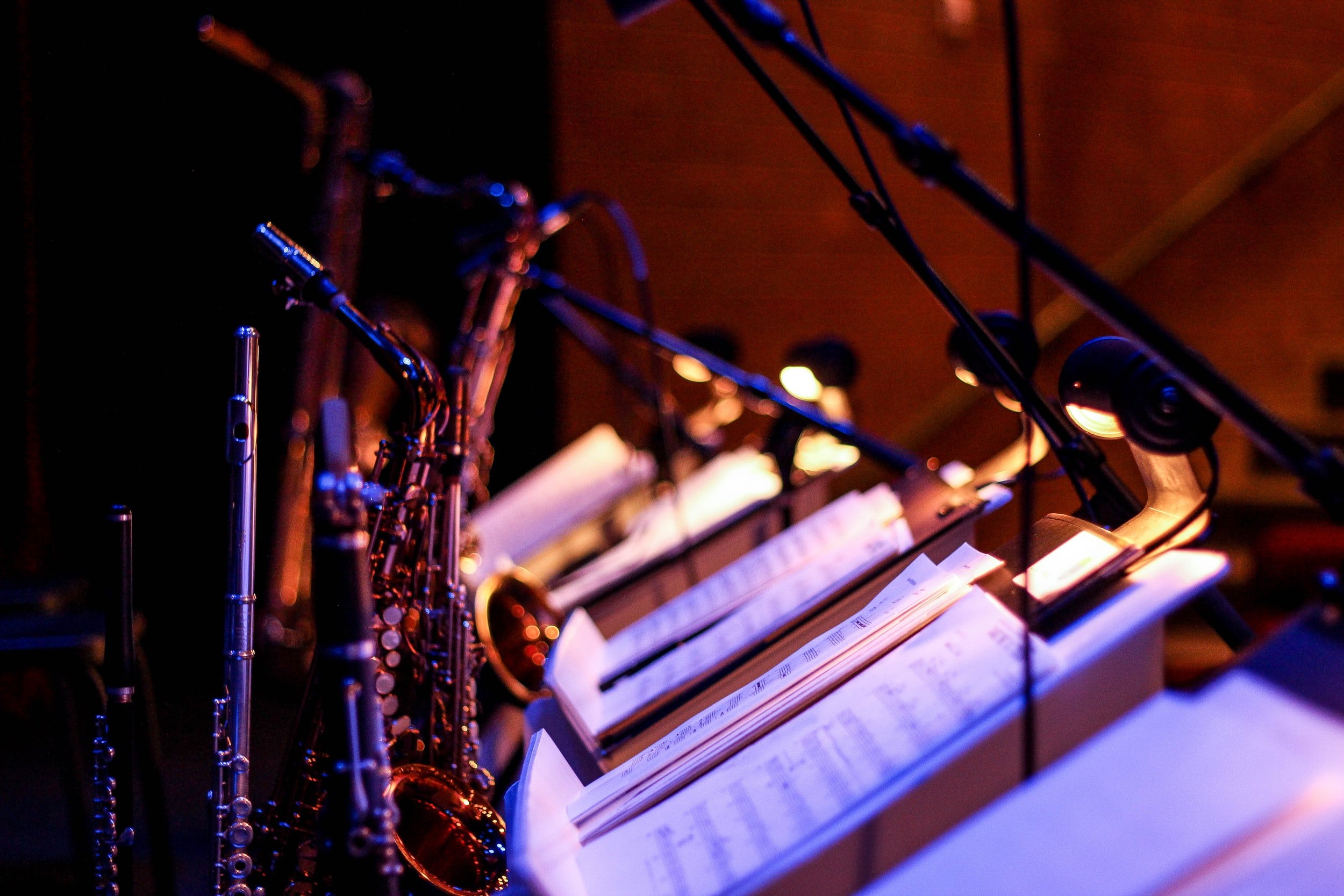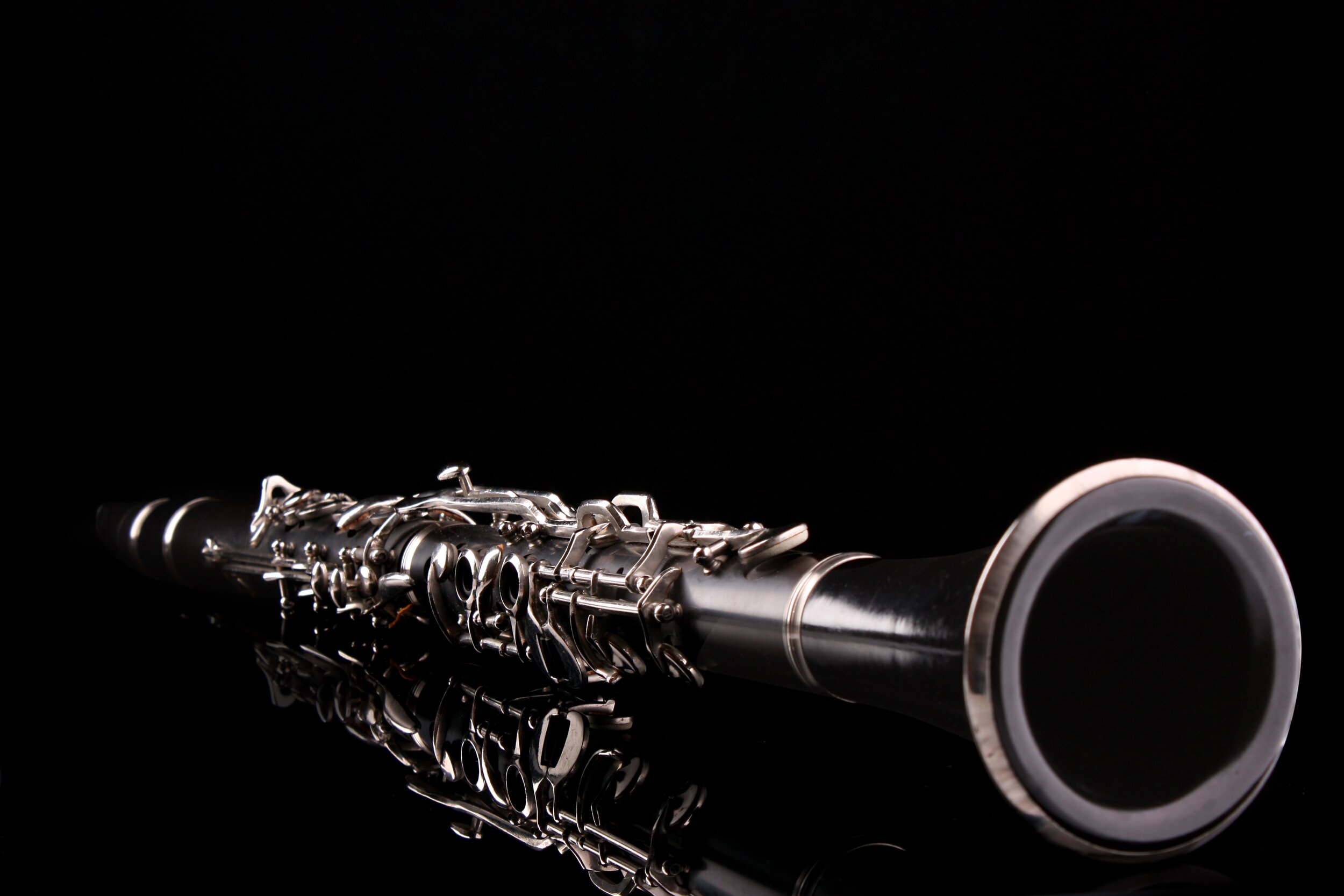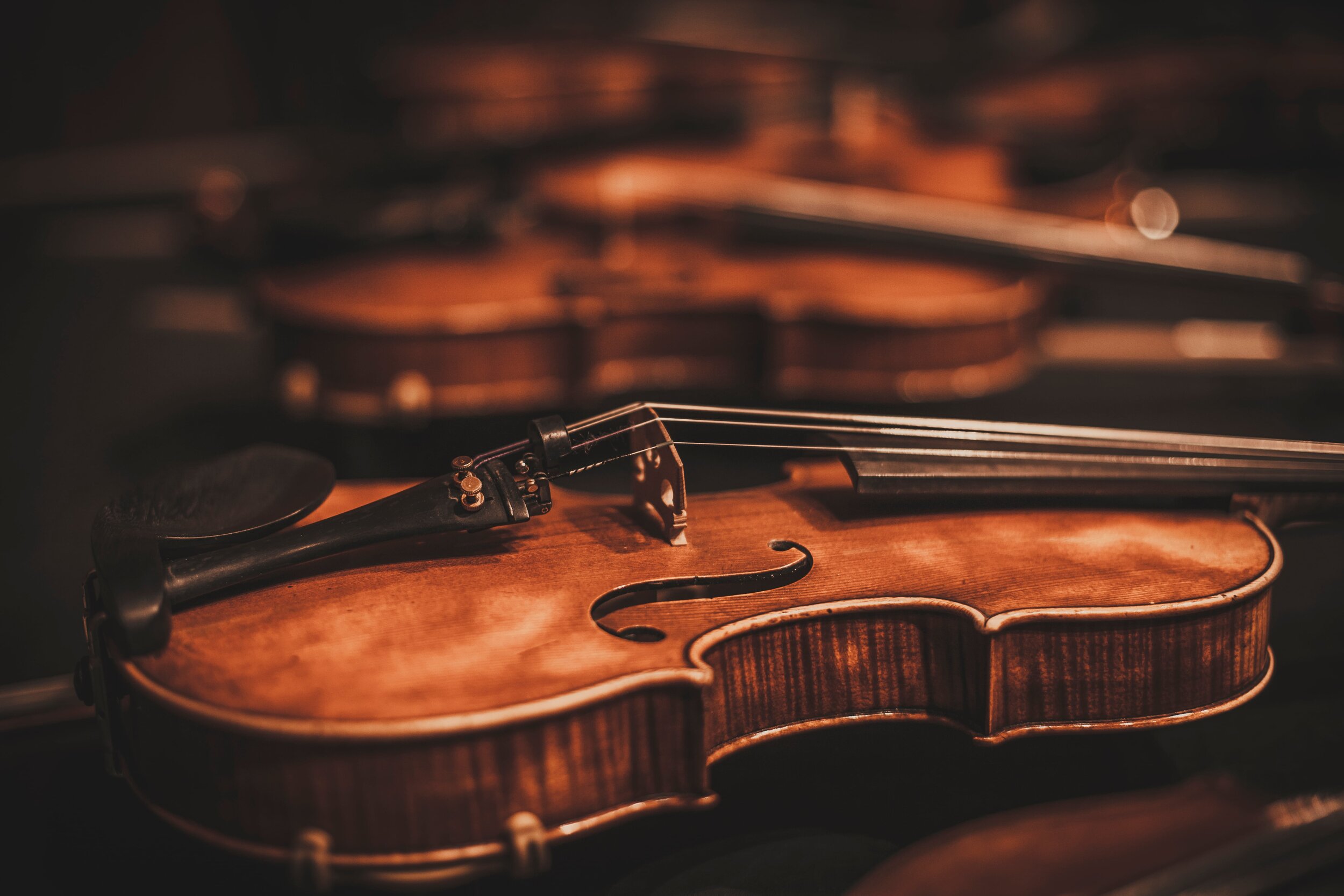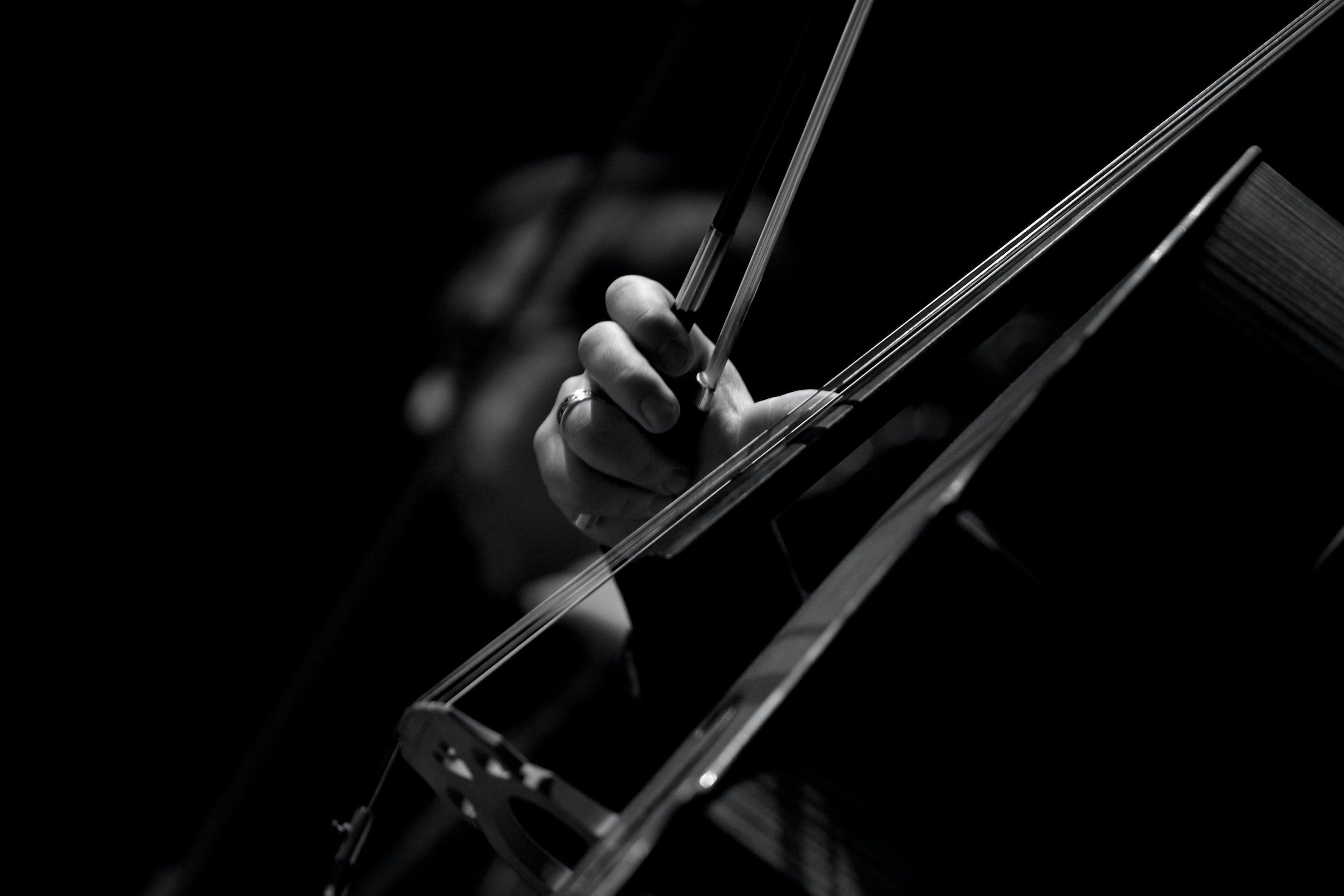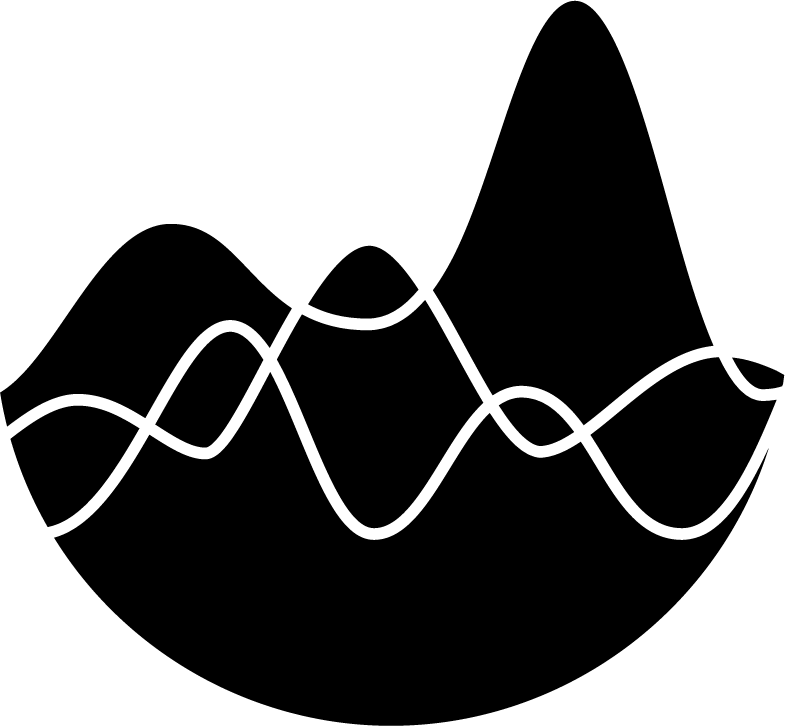Brass | The Trumpet Family
Brass | The Trumpet Family
Extreme Orchestration
by Don Freund and David CutlerPublished: February 2024
Trumpet
Bb Trumpet
Flugelhorn
Other Auxiliaries: D Trumpet, Bass Trumpet in Eb and Bb, Cornet, Flugelhorn.
TRUMPET FAMILY.
The trumpet is arguably the loudest and most powerful member of the orchestra, if one excludes the organ and certain deafening percussion. A single trumpet in its middle to high register at the ƒ dynamic level can always be heard, no matter how dense and loud the texture surrounding it. Trumpets paired or tripled in unison playing ff can convincingly evoke Judgment Day. In most of its range the sound of the trumpet can be warm and beautiful, though (when compared with the horn, for example) it rarely loses its edge and sense of tension even when played softly and muted.
TRUMPET HISTORY.
A brief overview of the history of the trumpet from the Baroque period forward is helpful in order understand the current sense of the trumpet’s place in the orchestra and to appreciate anomalies of trumpet voicing found in studying scores from the 18th and 19th centuries.
The featured virtuoso trumpet parts one finds in Baroque music use the “clarino” style. The example from Bach’s Jauchzet Gott cantata analyzed on the Brass Introduction page demonstrates the command of high partials needed to play this instrument. The written parts for D trumpet in Handel’s “The Trumpet Will Sound” from Messiah and F trumpet in Bach’s Brandenburg Concerto #2 use the same partials, but the trumpets are slightly smaller, sounding up a second or fourth; in the Brandenburg, the 16th partial, written as C6, sounds F6.
“Clarino” trumpet virtuosity disappeared in the Classic and early Romantic periods, with trumpet parts never going higher than the 12th partial, and usually moving in slow rhythmic values. The limitation of available pitches creates a voice-leading nightmare, particularly in the lower parts of a pair of trumpets, which commonly employ the kind of large skips orchestration teachers discourage in brass writing. Observe how the 2nd trumpet must play skips up a 9th and down a 12th in the cadence to this not unusual passage from Beethoven’s 4th Piano Concerto.
As a result the trumpets had to be resting during sections of the music outside the tonic key; if the composer needed the sound of trumpets melodically, the melody had to be constructed to accommodate the trumpet’s overtone series, at least for the beginning of the tune. The last movement of Beethoven’s Symphony No. 5 displays six measures of great trumpet melody, hitting the subdominant wall at measure 7.
Beethoven, Symphony no. 5, iv
Open score-following video | Navigate to work’s page
Although valved brass instruments appeared in the early 19th century, trumpets were slow to evolve, although valve cornets can be found in the works of composers such as Berlioz. Late Romantic composers, such as Bruckner, Mahler, Strauss, Debussy, and Sibelius, generally called for the valve trumpet in F, 50% larger than the modern C trumpet but sounding a p4 higher than written.
TRUMPET SIZES.
Modern trumpets are all written with their open fundamental (“pedal tone”) notated as C3. Trumpets come in a great variety of sizes. The B♭ and C trumpets have become the default instruments in the family. The B♭ instrument is clearly more common in band and jazz ensembles, while there may be a slight preference for orchestrators to write for the C trumpet. The B♭ is slightly fuller and the C is slightly brighter, but this distinction is subtle. It should be noted that trumpeters do not feel particularly compelled to use the size of trumpet designated by the composer, making their own choice based on the tessitura of the part and their personal preference.
TRUMPET: A GUIDE TO THE REGISTERS.
In most of its written range, from C4 to G5, the trumpet is a model of flexibility and agility. Although the loudness of the instrument definitely increases the higher it gets, the sound can still have a natural power in the lower part of this range, and delicacy and effective soft dynamics can be achieved toward the top of the staff. Above the staff, playing quietly or subtly is very difficult. There is no specifically defined top to the range, but the sound quality begins to lose its roundness above written C6, and most orchestral players are not comfortable above D6. It should be mentioned that jazz lead trumpet players, using a different mouthpiece, technique and attitude about tone, regularly play in the octave above the staff — G6 is no longer a rarity.
The bottom tritone of the trumpet’s range lacks body and luster, but this range can be used to fill out the sonority of quiet passages, to interlock with other brass instruments, or to add some extra noisy intensity in loud passages. Multiple fingering possibilities don’t exist in this region, so extra care must be taken in writing trills, tremolos, and any rapid passage-work in this register.
TRUMPET STRENGHTS AND LIMITATIONS.
The trumpet, in its modern valved incarnation, is an unusually versatile instrument, capable of far more than adding sonic muscle to climaxes. Except for extremes of range, a great variety of tonguing speeds and nuances can be employed to great effect.
Composers should take particular care with respect to the endurance required to play the trumpet. High notes are especially taxing: what might be relatively easy for one measure becomes nearly impossible if continued over 15 seconds; large or regular leaps can add significantly to the difficulty of a passage, but these are possibly the only technical limitation to be observed. If it were not for the inherent heaviness of its sound, trumpet writing could almost be as sprightly and adroit as any woodwind instrument. In its lower middle range, it is capable of warm lyricism and unobtrusive harmonic support.
MUTES AND EFFECTS
The information given in the “Brass Introduction” regarding mutes is particularly appropriate to the trumpet, which in all cases was the instrument for which they were primarily designed. Half-valve glisses, and “falls” are effective if somewhat imprecise on the trumpet; harmonic glisses are less effective.
THE PICCOLO TRUMPET.
The B♭ piccolo trumpet is an invention whose principal function is to make Baroque high clarino trumpet parts more manageable. It is half the size of the standard B♭ trumpet, with partials sounding an octave higher than that instrument. Its range may be extended downward a p4 by a 4th valve found on some models. Most B♭ piccolo trumpets have an adjustable or alternate lead pipe, allowing them to be pitched in A. The D and E♭ trumpets are slightly smaller and brighter versions of the standard trumpet; a case could be made for preferring the E♭ trumpet to the D as a more distinctly bright sound. The written lower range limit of these instruments corresponds to standard trumpets, but the high range is less mechanically fixed; playing a written C6 on an E♭ trumpet is not as easy as on a B♭.
THE BASS TRUMPET.
Bass trumpets are rarely used. Although employed extensively by Wagner (most notably in the Ring cycle) and Strauss, perhaps the most famous appearance of this instrument is in Stravinsky’s Rite of Spring, where an E♭ bass trumpet is called for, sounding a M6 lower than written. This instrument has also been called an alto or tenor trumpet. There is also a B ♭ bass trumpet, sounding an octave lower than the standard B♭ trumpet, resembling a valve trombone. It is generally played by a trombonist, and its sound quality matches the trombone’s hefty richness combined with the brightness and agility of a trumpet.
CORNETS AND FLUGELHORNS.
Cornets and Flugelhorns are primarily conical bore instruments that are mellower and less brilliant than the trumpet. Parts designated as “cornet” parts in band scores are frequently played on the trumpet, as are many of the cornet parts in orchestral and chamber music. The cornet is two-thirds conical bore, while the flugelhorn is completely conical (excepting the valve tubing), so that these instruments approach the sound of the horn and blend well with woodwinds. These are both in the key of B♭, having the same written range as the standard trumpet, but playing high notes on the flugelhorn is difficult. The flugelhorn is the better choice if a composer is looking for the greatest contrast to the trumpet sound, but there is a caveat: not all orchestral trumpeters are comfortable with the deeper mouthpiece cup of the flugelhorn, and the instrument has a reputation for being difficult to play in tune. This is less of a problem in flugelhorns with a fourth valve (becoming more common), which also extends the range downward a p4.
Another trumpet, seen more and more frequently in American orchestras, is the rotary-valve trumpet, usually associated with German orchestras and composers. This darker-toned instrument is generally used by the choice of the conductor or the trumpet section, but as it becomes more widely available, it may be specified by the composer.
How many sounds can a woodwind quintet produce? To many, this question may seem absurd, almost condescending, with such an obvious response. Five, no? But upon closer observation we may draw a very different conclusion.
No instrument is limited to one single sound. On clarinet alone, for example, it is possible to hear low clarinet, mid-range clarinet, high clarinet, staccato clarinet, legato clarinet, sustained clarinet, loud clarinet, and soft clarinet. The list could go on and on. There are just as many sonic possibilities on flute, oboe, horn, and bassoon. Not to mention combination sounds, such as the flute and clarinet in unison or the horn and bassoon two octaves apart. It soon becomes apparent that this small ensemble of five players is easily capable of hundreds, or even thousands, of “sounds.” The number of sonic possibilities from an orchestra is virtually infinite.
When describing musical sound or timbre, analogies to color are often drawn. What are the most colorful sounds? Some might guess that combining flute, clarinet, trumpet, marimba, and violin playing in unison could produce an incredibly amount of color, since each instrument adds its own personality, but this is not the case. Just as combining many colors of paint will result in a gray or black, combining many instruments will cancel out the unique qualities of each. Featuring so many instruments may result in a thick, powerful sound, but as a rule of thumb, solo instruments project more unique colors than combination groupings.
However, context is the real determinant of the impact a color will have. If, in our painting analogy, most of the canvas were covered with pastels, with the exception of a single black streak, that may stand out as the most striking feature. The dense instrumental combination described above could be very striking following a long passage of solo statements. A single clarinet sounds much less colorful when draped over a backdrop of saxophones than it does when combined with a string choir.
Instrument Studies for Eyes and Ears (ISFEE): These pages explore the techniques and timbres of the trombone, with scores synched to video recordings. Created by Don Freund, site designed by Reid Merzbacher. These links go to the ISFEE pages for:
Trumpet
Flugelhorn
Piccolo Trumpet
Trumpet Family Orchestral Examples.
Here are examples from orchestral literature that demonstrate characteristics of the trumpet family.
TRUMPET EXCERPTS.
These excerpts are notated here in C, although the Mahler, Stravinsky, and Respighi examples appear for the B♭ instrument in the scores. In actual practice, trumpet players will choose freely which instrument to use, regardless of the score indication and transposition; we are printing these passages at concert pitch to give a more accurate reference of how they sound and are played.
This second excerpt from the same movement shows how a solo trumpet in its middle register can easily project a lyric line against a great deal of activity in the rest of the orchestra.
Mahler: Symphony No. 5, 1st movement mm. 155-172 (rehearsal number 7-8)
Click here for the score-following video
This excerpt demonstrates the trumpet’s ability to play with lightness and fluidity. It was assigned to cornet in the original version and trumpet in the revision, although it is generally played on trumpet no matter which version is being performed. Stravinsky also added the staccato marks and contrasting p dynamics in the 1947 revision. Observe how these articulations define the character of the music.
Stravinsky: Petrushka (1947 version), Third Tableau, rehearsal number 135-139 (corresponds to rehearsal number 69-70 in the 1911 version)
This short excerpt was chosen to show the highest range of the trumpet for orchestral writing. It would be more secure if played on an Eb trumpet, but in any case its series of leaps makes it treacherously virtuosic.
Bartok: Concerto for Orchestra, 5th movement, m. 233-245
This passage displays the luster and penetrating power of muted trumpets, even when played staccato and p.
Respighi: The Pines of Rome, 1st movement, “Pines of the Villa Borghese,” rehearsal number 7
This is a brilliant example of clarino trumpet writing for the large, valveless baroque D trumpet, but modern orchestral trumpeters will perform this on the A or Bb piccolo trumpet, one-third the size of the original instrument.
Bach: Magnificat in D, m. 18-31 (notated at concert pitch)
Tippett uses the flugelhorn to portray the husky but agile improvisatory nature of his “Slow Blues.”
Tippett: Symphony No.3, Part Two, rehearsal number 189
An flugelhorn example from Ralph Vaughan Williams’ Symphony no. 9.












